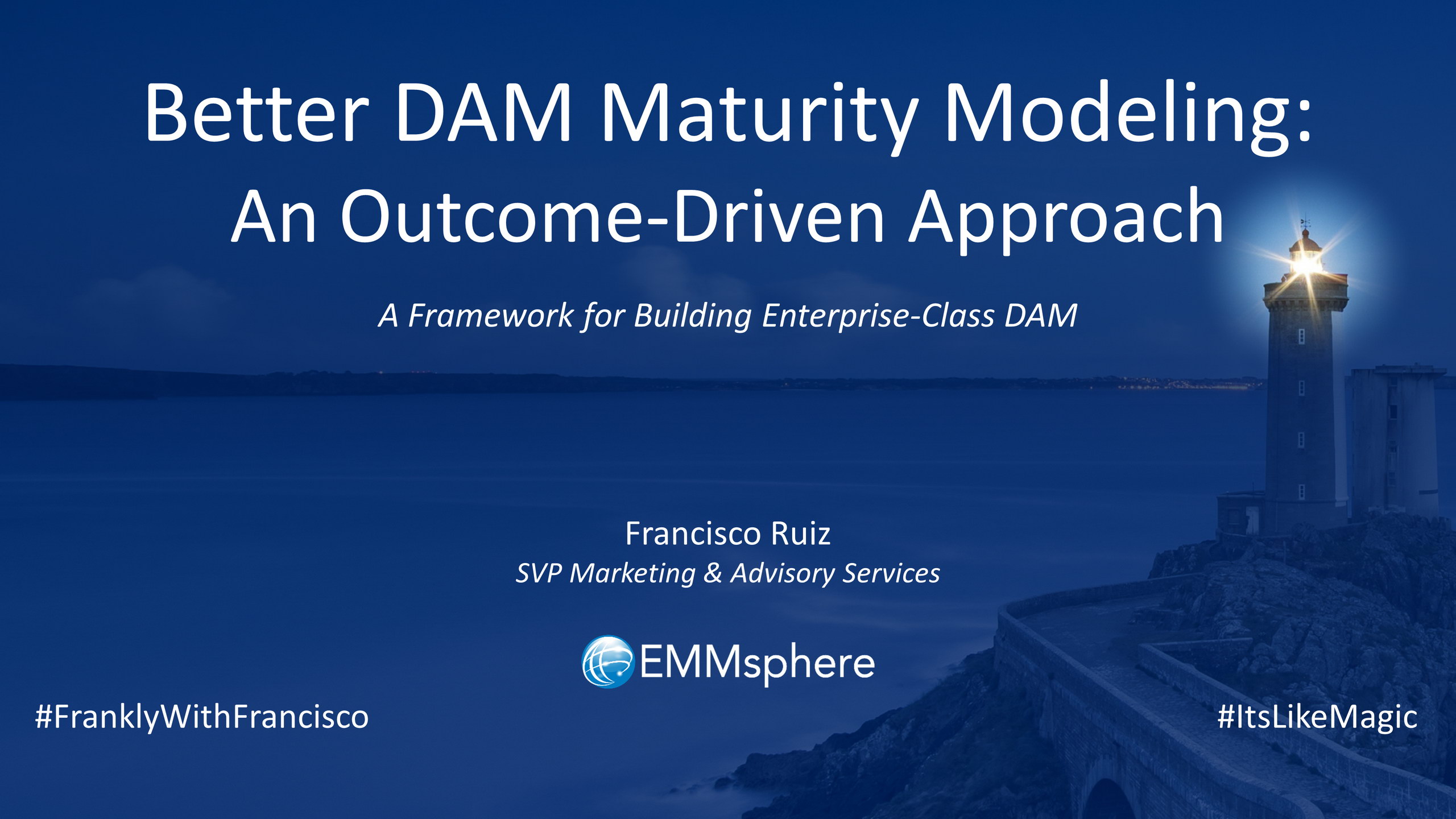
A Mismatch Between What’s Offered & What’s Needed
OK, so let’s start right at the beginning with a simple and brief idea:
Of course, it’s not fair to make a statement like that without at least trying to suggest some kind of alternative. So here’s my suggested alternative: I wrote a different model!
Now, you’re probably wondering, why on earth would anybody do that? I mean, aren’t there plenty of good models already out there? Well yes, there are. In fact, there’s even a fairly well-known maturity model out there specifically for DAM.
But as much as I tried, I just couldn’t get totally behind it. It just felt like something was missing.
So I went out and did a lot of research on the subject. And the more I learned, the more I realized there was a mismatch between what was being offered, and what I thought was needed.
The Real Challenge: Achieving Our Goals
To illustrate the point, let’s consider an example: suppose you’re a writing consultant, and a friend comes to you for advice on how to become a writer.
So you pull out your trusty “Writing Maturity Model”, you rigorously apply it, and you authoritatively convey the results: “The model indicates you currently write at the 12th grade level.”
Your friend looks puzzled, then replies: “So what? 12th grade is hardly illiterate. Besides, I write with perfect grammar and I never misspell a word. I fail to see the problem here.”
So now you have no choice but to respond in full-on consultant mode: “Indeed, you do in fact write in a grammatically correct manner, which is exactly what you’d expect at the 12th grade level.
“But suppose you want to be a novelist?
“In that case, perfect grammar won’t be enough – you’ll need to write artistically as well. So take advanced writing courses in symbolism, metaphors, and storytelling. Then, read ‘One Hundred Years of Solitude’, ‘Crime and Punishment’, and other works of literature. And most importantly: go out and live a little – ponder the meaning of life. Because to be a great novelist, you’ll need something profound to write about.
“Now on the other hand, suppose you want to be a journalist?
“In that case, perfect grammar will be enough – but you’ll need other skills as well. So take courses in criminology, critical thinking and journalism. Then, get a job in a news room, learn how to track down breaking stories. And most importantly: don’t take no for an answer. Because tenacity, even more than writing, is what will make you a great journalist.”
Your friend marinates for a moment on all the wonderful advice you just provided. Then they say: “Well, actually, I want to be a poet.”
Can you see the problem now? Depending on what you’re trying to achieve, the skills needed, and the recommendations made, will always change.
Prescription Is The Path Forward
The fundamental issue with maturity models in general (and the well-known “DAM Maturity Model” in particular) is this: they are diagnostic tools focused on measuring levels of proficiency, not prescriptive tools focused on achieving specific outcomes.
And since they don’t target specific outcomes, maturity models have limited applicability, and can even be misleading, for 4 reasons:
- There’s no context. Which means those higher levels of proficiency may be unnecessary, or even irrelevant, since they depend on the overall frame of what you’re trying to achieve.
- There’s no sequence. Meaning, the ordering and timing of capabilities you need to develop are not specified. Besides, sequence can shift around, especially if you need to show results quickly.
- There’s no KFS. They don’t explicitly identify nor emphasize Key Factors for Success, i.e. those capabilities that generate the most leverage toward achieving your goals.
- There’s no prescription. They don’t offer a recipe for success. And, by focusing more on levels than on the finished product itself, they risk placing too much attention on less important ingredients – the forest and tree problem.
Now, here’s the really good news: while a diagnostic model is not prescriptive, the opposite is true – a prescriptive model is diagnostic. With a huge bonus: it also helps you to pinpoint the deficiencies and dependencies you’ll need to address in order to achieve your goals.
It’s like getting two models for the price of one – and that, my friends, is pure magic.
Now, don’t get me wrong: I’m not suggesting that we should stop using maturity models altogether. Quite the contrary. Any self-respecting consultant – myself included – always keeps several in their back pocket.
However, what I am suggesting is this: in the end, a consultant’s job is to help clients drive to specific outcomes and to achieve specific results. And on that score, the models I found out there simply didn’t do it for me. Because:
So instead, I wrote a different model, one that is decidedly prescriptive and outcome-oriented in nature. And that’s what I’d like to share in the video below, which I sincerely hope proves helpful to anyone contemplating a DAM adventure.
And of course, if anyone has any questions, by all means please feel free to contact us!
Leave a Reply